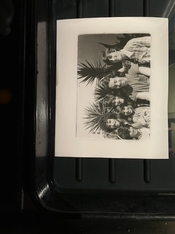Why most Ilford printing paper has not the 3/2 ratio in dimensions like of a 35mm film ( 24mm x 36mm)
5:4 proportions allow easy contact printing or enlarging from glass plates or sheet film. I don't know where those proportions and actual sizes originally came from. If they weren't completely arbitrary, they may have been based on some pre-existing standard in the glass or paper industries. Photographic glass plates were defined as a 8.5" x 6.5" 'whole plate', which could be progressively halved into 'half plate' or 'quarter plate' sizes. Whether those standards already existed in the manufacture of blemish-free sheet glass, I don't know. Anyone else know?
There was a paper standard in Britain that almost matches photo paper sizes (but not glass plates). Paper standards were based on halving, quartering, etc an uncut sheet (starting with 'foolscap', 'post' or 'copy': each had different dimensions). The 'copy' series was:
copy (uncut sheet) 20" x 16"
copy folio (i.e. folded) 16" x 10"
copy quarto 10" x 8"
copy octavo 8" x 5"
For photographers using formats other than 5:4, these conventions are obviously a relic. All the same, as others have already said, having a broad margin makes handling much easier. Having any kind of margin to trim off is beneficial in terms of flattening the print, or alternatively allowing some overlap with an over-mount board. There is also said to be an advantage in removing contaminants, which are allegedly concentrated in the edges - but don't ask me for evidence!
Despite the availability of other formats, I buy the 5:4 paper sizes for enlarging 35mm. My image area on 16"x12" ends up 15"x10", so I am 'wasting' about 22% of the paper area. If the paper had 3:2 proportions, i.e. 16" x 10.7", I would still 'waste' 12% of the paper on the 0.5" margins dictated by my enlarging easel. Considering the advantages of having margins, either option seems trivial compared with the whole sheets of paper I waste by messing up!













